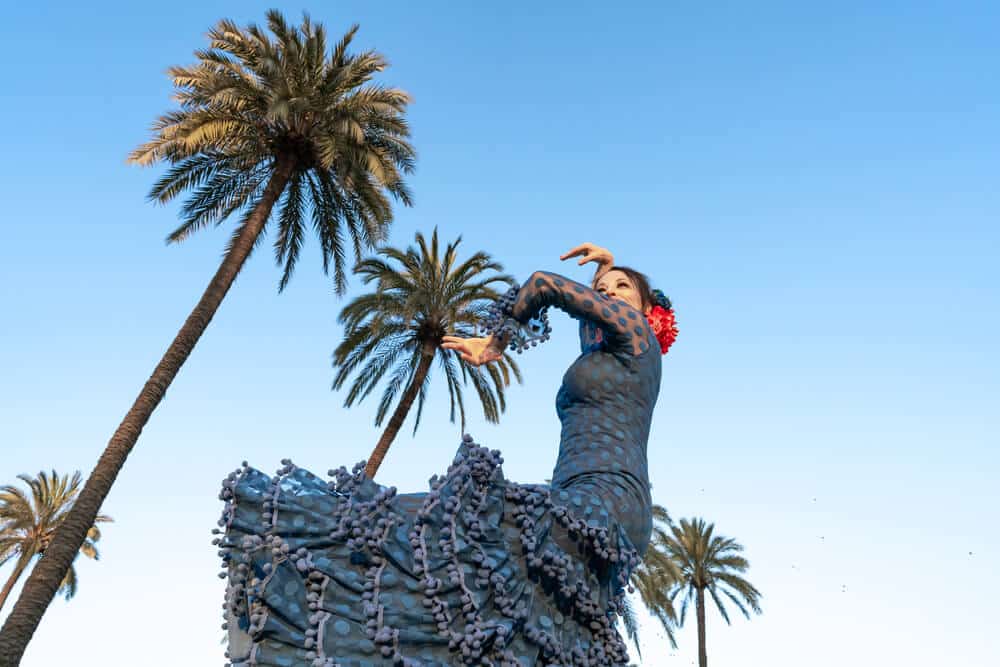The serranas del flamenco are a type of cante of peasant atmosphere, whose themes allude mainly to the highlands, being the protagonists the shepherds, the smugglers, the bandits and the muleteers. Hence its name, which refers to the Andalusian mountains, specifically the Serranía de Ronda.
A cante that, in the middle of the 19th century, enjoyed great popularityThe “cantaor”, very present in the repertoires of the singers who performed in the tablaos of the theaters. But nowadays it is more and more in disuse due to the restriction established by its melodic structure.
What is Flamenco Serrana?
The serrana of flamenco is a flamenco style with a copla of four even-rhymed lines, the first and third of which are composed of seven syllables, and the second and fourth of which are composed of five syllables. Complemented by a tercet in which the odd-numbered lines rhyme, while the second line is free.
It is defined as a melodious songcourageous of solemn and long phrases that requires powerful skills on the part of its singers to be interpreted. Besides being necessary a harmonious voice to be able to temper the thirds and to lengthen the necessary.
What is the origin of the serrana’s flamenco singing?
The cante flamenco por serranas seems to have derived from an Andalusian Andalusian folk song, probably lacking compás, which was was flamencoized in the middle of the 19th century.. However, in the 16th century there was already a lyrical song known as serranilla that seems to have a literary composition very similar to the serrana. Most authors agree that the melody contains airs of caña, seguiriya and, above all, liviana.
Some authors consider that this genre is closely related to the gypsy smugglers, who in the 19th century were known as serranos. However, there are those who believe that they are derived from the seguidillas sevillanas and manchegas and others claim that the liviana, the calesera and the serrana, at some point, were the same genre. There are even authors who insist that it is a Cordovan cante, but that it could have originated in any of the Andalusian sierras.
In any case, what is certain is that Silverio Franconetti is considered the first promoter of the serranas, who established the tendency to sing them preceded by the livianas and finished with the seguiriyas de cambio. But also stand out great singers like Villalta, Gallardo el de Morón, Fernando el Herrero, Don Antonio Chacón, Antonio RENGEL and Antonio Silva “El Portugués”.
Characteristics of the serranas
Some of the characteristics that best identify the serranas are the following:
Compass
The meter of the serranas is the same as that of the seguiriyas, which makes us think that, given the antiquity of the serranas, the seguiriya probably adopted the rhythmic air of the serranas and not the other way around.
Although both styles are very similar in playing, in the serrana there is a tendency to play at a calmer pace than in the seguiriyas. But it could also be considered that the early livianas and serranas were performed on a compás abandolao, like the fandangos of the eastern part of Andalusia, and that they finally took on the style of seguiriyas to achieve a greater flamenco depth.
Letters
The couplets are seguidillas and, mainly the liviana, are sung over a complete couplet in the same way, composed of four even-rhymed lines of verse, the first and third of seven syllables, and the second and fourth of five syllables. To these, a tercet (macho) is added, with odd-numbered lines of five syllables and the second of seven syllables. The same metric as the Castilian seguidillas.
Shade
Like the rest of the seguiriyas, the serranas take the flamenco mode and are accompanied in the key of E (por arriba), thus distinguishing them from the rest of the seguiriyas that are usually accompanied in the position of A (por medio).
In short, the serrana is a kind of caña-polo that assumes the compás of the seguiriya. A cante with a lyrical tone and a wide range of sound that was flamencoized in the middle of the 19th century and is considered to be the most illustrative palo of the birth of flamenco. A brave, powerful and deep song, with a lot of passion and determination, exceptionally catchy and melodious.




